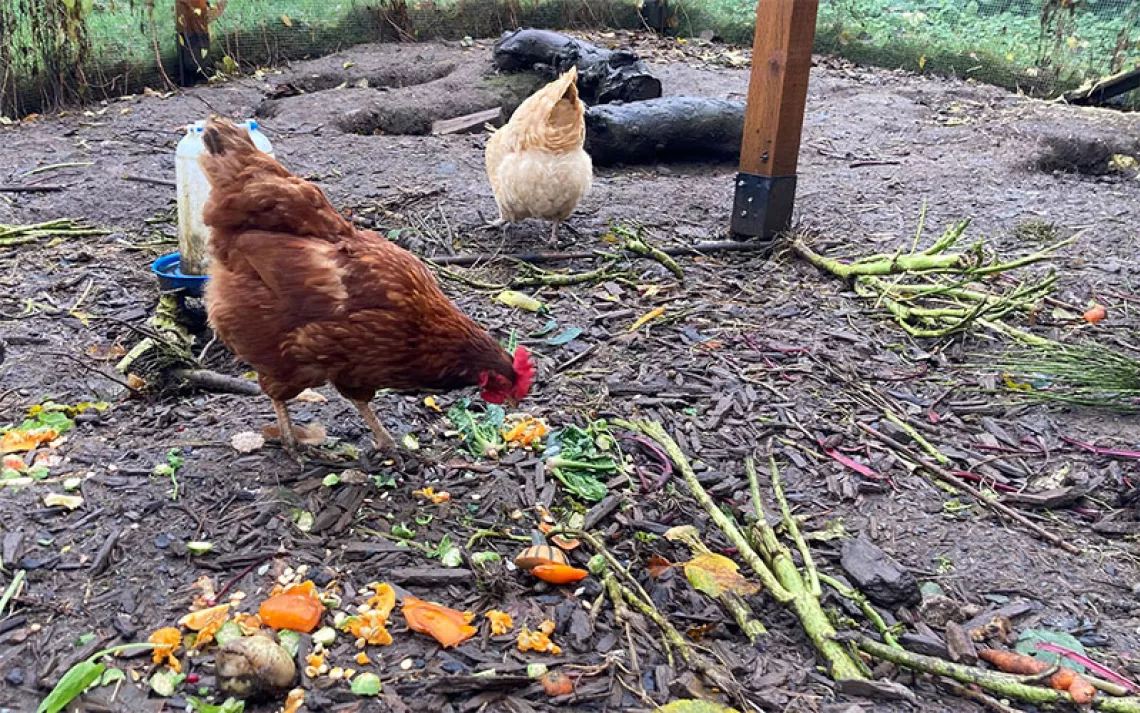How to Reduce Food Waste
Make soup, organize your refrigerator, and follow these five steps to zero waste
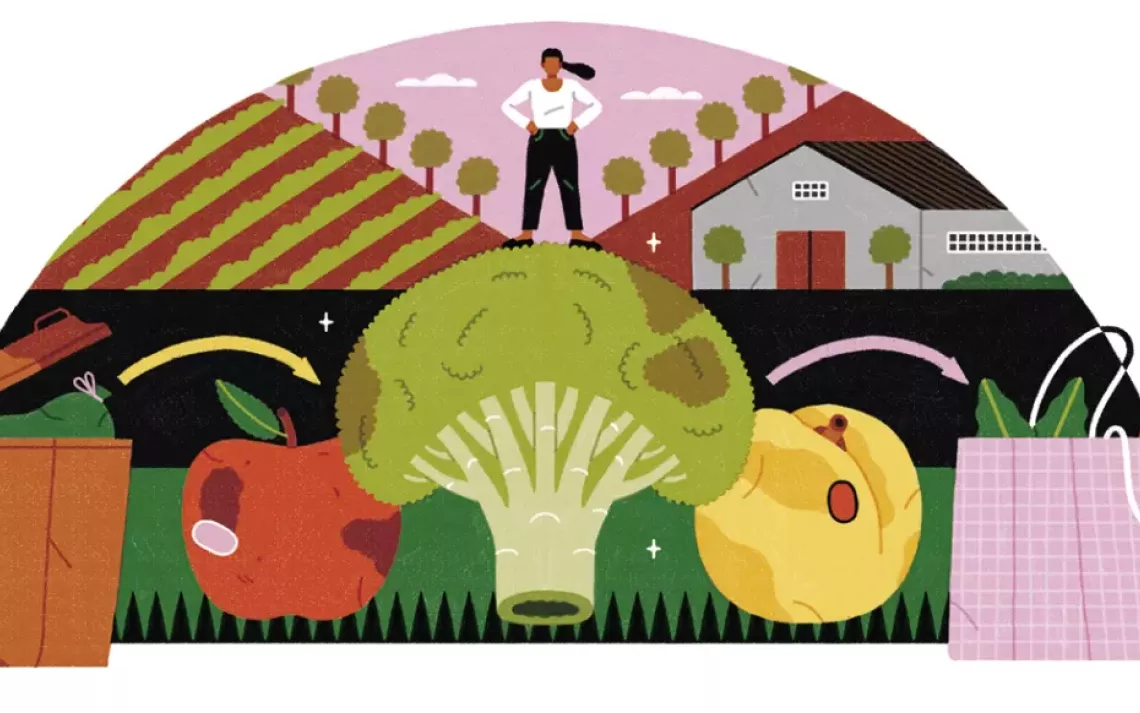
Illustrations by Montse Galbany
The last time I went to the supermarket, a guy was standing by the store’s dumpster, happily eating a discarded peach. The market already does a lot to reduce food waste, like selling expiring produce dirt cheap and dehydrating excess fruit to sell in the bulk section, but the dumpster still fills up. US grocery stores throw away about 3.5 million tons of food a year—mostly dairy and produce, like that one good-enough peach.
Grocery stores are not uniquely wasteful. Perfectly edible food gets trashed throughout the food system, from the millions of pounds of vegetables farmers plowed under because restaurants closed during the pandemic to the broccoli your kid wouldn’t eat at dinner. The United States dumps a prodigious amount of food—80 billion pounds a year, or more than 200 pounds per person per year. That’s an obvious moral failure in a country in which 50 million people are not always sure where their next meal is coming from. It’s also an environmental disaster: Discarded food is the single-largest component of US landfills. There it becomes the country’s third-largest source of methane, the powerful greenhouse gas that forms as your uneaten Chinese takeout rots. We can do better. Here’s how.
Reducing Grocery Store Waste

UNDERSTAND FOOD LABELS Consumers throw away millions of pounds of food each year because they are misled by producer food labels like “Sell by” and “Use before.” In 2019, the FDA recommended a single designation: “Best if used by.” This label speaks only to peak quality—the food does not turn poisonous the next day. Use common sense: If the food looks, smells, and tastes OK, don’t throw it away.
EMBRACE UGLY PRODUCE As much as 40 percent of fruits and vegetables are discarded because they don’t meet exacting cosmetic standards. The easiest solution is to relax those standards or to sell ugly produce at reduced prices (although both Walmart and Whole Foods abandoned their experiments in doing so). Companies like Full Harvest channel cosmetically challenged produce to food processors (like canners and juice makers) that don’t care what it looks like. At misfitsmarket.com, you can buy a subscription for home delivery of food that might otherwise go to waste.
AIM FOR ZERO WASTE Perishables perish in supermarkets for many reasons. Managers misjudge what customers want; produce displays are ridiculously overstocked; preprepared food won’t last. Supermarkets often donate their excess to food banks, but according to a survey by the Center for Biological Diversity, only three of the top 10 chains—Kroger, Walmart, and ADUSA—have committed to zero waste. (Learn more at grocerywaste.com.)
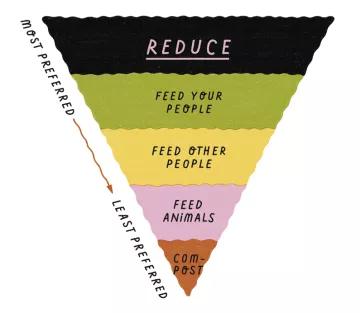
Five Steps to Zero Waste
In 2015, the USDA and the EPA set a goal to cut food waste in half by 2030 and introduced an inverted pyramid that shows better uses for excess food. But their version addresses the food system as a whole, and industrial uses like making bioplastic from banana peels aren’t relevant to the home cook. So here is a personal—not USDA approved!—version. End goal: Not a crumb ends up in the landfill.
REDUCE If you find yourself in a hole, stop digging. The best way to reduce food waste is to stop buying more than you can eat. Are you really going to finish that six-pound tub of guacamole from the big-box store? Probably not. Plan your menus, and know how much you can freeze or store. Pro tip: Never shop hungry.
FEED YOUR PEOPLE And stretch out your food. You bought it, you eat it. Abundance is an opportunity to exercise your culinary imagination (see “Waste-Free Cooking Tips”). Food waste is a sin of privilege; don’t be the person who throws perfectly good food away because they no longer find it interesting.
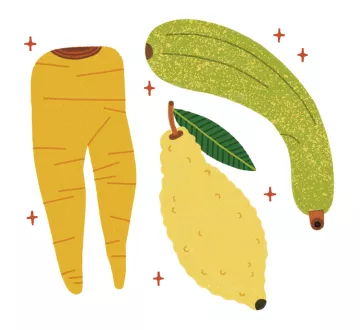
FEED OTHER PEOPLE Too much food = not enough guests. It’s a human duty, when blessed with bounty, to share the wealth. Bumper crop of tomatoes? Distribute to garden-less friends. Threw a pizza party, but you don’t have as many friends as you thought? Take the extras to the homeless shelter (check first to make sure it’s OK). Many communities have organizations that will pick the fruit off your trees on behalf of local food banks.
FEED ANIMALS Feeding animals can be tricky if you don’t live on or near a farm; contact your local agricultural extension office for opportunities to donate scraps to farm animals. Backyard chickens are excellent recyclers of leftovers: Today’s oatmeal is tomorrow’s delicious egg. Dogs and cats would love to recycle too, but for health (and obesity prevention) reasons, human food should only be a snack.
COMPOST When excess food is composted, either at a municipal facility or in a backyard, its nutrients can be recycled into the soil. Composting also precludes the production of methane from rotting food. Beware: If not cared for assiduously, food scraps in conventional compost piles may attract rodents and other critters. If you’re composting mostly food, try a worm box.
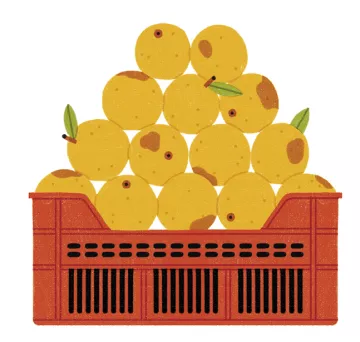
BUY A NEW REFRIGERATOR Refrigerator efficiency doubles every 15 years, so buy a new one and save money. (Be sure to recycle the old one!) Shallow shelves are good because stuff doesn’t get lost in the back; double doors let you see at a glance what you’ve got.
SEGREGATE YOUR PRODUCE Some fruits and vegetables—apples, melons, avocados, tomatoes—naturally produce ethylene, a gas that hastens ripening. Keep them separate from ethylene-sensitive produce like broccoli, asparagus, carrots, and lettuce.

Make every day an Earth Day
Get articles like this one sent directly to your inbox.
With this action you affirm you want to receive Sierra Club communications and may vote on policy designated by the Sierra Club Board.
LABEL LEFTOVERS The container of last night’s Bolognese sauce is less likely to turn into a science project if you clearly label and date it. Painter’s blue tape works great.
MAKE IT A GAME Jammed refrigerator after the holidays? Same for your friends? Challenge them to the Hunger Games: Eat only what’s on hand as much as possible. After a week, the emptiest fridge on social media wins.
PRIORITIZE PERISHABLES Designate a “use first” shelf for items that need to move.
DON’T WASTE; ORGANIZE Establish sectors in your fridge for like items—sauces, cheeses, condiments—so you can easily find what you’re looking for. If you can’t see what you’ve got, for sure it’s going to rot.
Waste-Free Cooking Tips
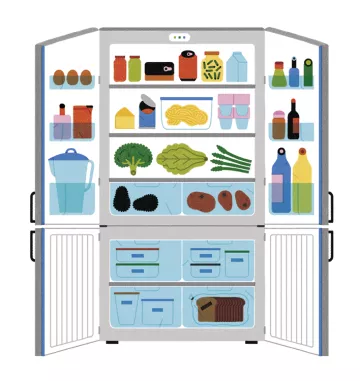
Storage
You’ve got to preserve excess food long enough to find another use for it. Consider getting a small energy-efficient chest freezer for large quantities of things you eat a lot of. Home canning is great, especially for tomatoes and jams; our plum tree gives a year’s supply of plum butter (good for breakfast and gifting).
Repurposed Leftovers
Every culture has a vehicle for disposing of leftovers: pasta or risotto, tacos, fried rice, rice bowls, succotash. Too much chard? Braise with garlic and put in tacos with salsa verde. A couple of lonely shrimp? Chop with scallions for fried rice. Elderly carrots? Grate into a risotto with a little cream and Parmesan. Extra boiled potatoes? Fry some chorizo and add cut-up spuds for an excellent taco filling. (My family calls this Chorizo Helper.)
Soup
When it comes to using up excess and aging food, nothing is as versatile as soup. Most everything in your veggie bin can go into the pot to make broth. Add the broth to some sautéed alliums (onions, shallots, leeks, garlic) and chunks of tubers or squash. Cook until tender, then maybe add greens and herbs, cook a few minutes more, and blend. Finish with a swirl of cream or good olive oil.
Bread
Fresh bread is great the first night, OK the second, but then? If you have way too much, slice and freeze for toast making. Old loaves are perfect for French toast or bread pudding. Cut old slices into cubes for frying in olive oil and garlic for croutons. Heels can be dried out in a paper bag (or an oven as it cools) and then ground into crumbs for breading.
Apples
What if you have too many apples? Cook them down to applesauce or even further for apple butter. Make a pie so you can exercise your right as an American to eat apple pie for breakfast. Dry apples in a food dehydrator as a snack for kids or hikes. Serious oversupply may require a juicer; an excess of apple juice may lead to hard cider.
Pinto Beans
Tired of those brothy beans? Sauté some diced onion in a heavy skillet, add beans and broth, mash a bit, and cook low and slow until the liquid is gone. Turn over on itself for refried beans. Alternately, add enchilada sauce, some diced tomato, and leftover protein of your choice for a quick chili.
 The Magazine of The Sierra Club
The Magazine of The Sierra Club



